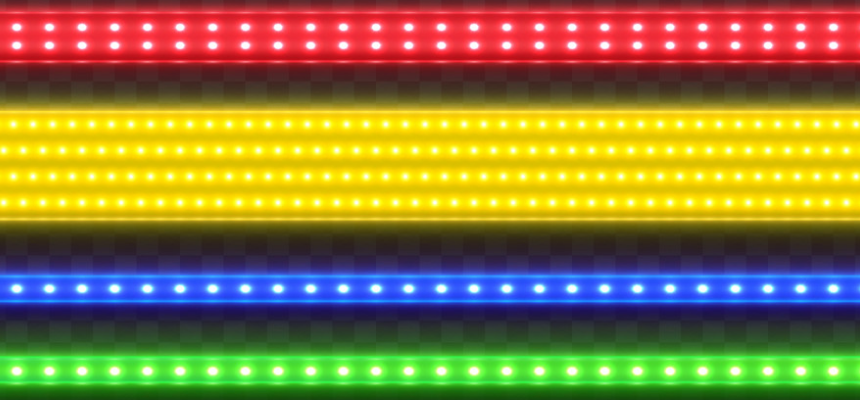Learn LED strips
LED strips are flexible circuit board that has a series of SMD (surface mounted) LEDs (light emitting diodes) and resistors attached to it,it’s a new generation of innovative lighting products that allow for creating spectacular effects in an easy way. LED strips have other advantages: they have small dimensions, more efficient energy consumption, saturated colours and are easy to control. As you will see, the possibilities are too numerous to count.

LED strips can be divided in 2 groups: flexible and rigid strips.
This selection guide will only focus on the flexible LED strips, as they offer the most applications,which is wrap with soft silicone or PU to protect the diodes.



| IP20 | IP61 | IP68 |
| no protective coating | silicone or PU | silicone casing |
| width: 8 mm | width: 8 mm | width: 10 mm |
| height: 2,2 mm | height: 2,5 mm | height: 4 mm |



Remark: The life span of LEDs is inversely proportional to the current running through them. The lower the current, the longer their life span.

High- power LED strips produce a lot of heat because many LEDs are positioned close to each other. Using LED strips at too high a temperature will considerably reduce their life span.
Reducing voltage will also reduce input current and power consumption. Reducing power consumption will in turn reduce heat production. With this solution, however, light output will also decrease considerably.
Example: A 12 V LED strip consumes 35 W at 12 V. When reducing the tension to 11 V, the consumed power drops to 25 W, but produces only 75 % of the normal light output.
If light output is important in your situation, reducing voltage is the least efficient solution.
In places that will have a lot of dust, debris, or potential to be in contact with any solids or liquids, you’ll want to make sure that the IP ratings are high and that you have adequate water resistant or waterproof coatings on the LED strip lights. Then the high IP rate LED strip come out.
The process of silicone LED strip extrusion process



After extruded, the LED strip will go through the 20m long vulcanizing oven and forming.



Connect with wire and end caping, the LED strip product will done.
Features of silicone LED strip: